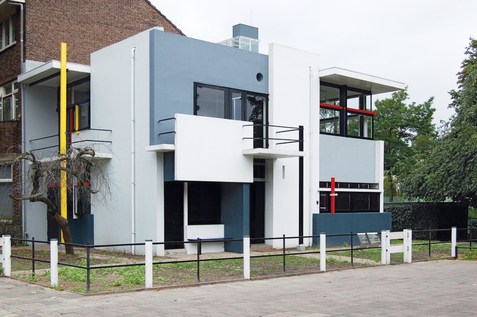
As the son of a father who single-handedly designed and built (everything above the chassis, in wood and aluminium, with hand tools, only working in his spare time) two splendid caravans in our back yard, I’ve always believed that good joiners would make tolerable architects.
In 1917 a young Dutch joiner named Gerrit Rietveld opened his own furniture-making business, designing and making a revolutionary chair, later known as “the red and blue”, bringing him to the attention of De Stijl, a Dutch avant-garde movement.
In this movement, which he joined in 1919, Rietveld met many like-minded designers, painters (including Mondrian) and architects from whom he gained the impetus to become an architect himself.
In 1924, in collaboration with client and friend Truus Schröder, he designed a house that was possibly the most important of the 20th century. The Schröder House in Utrecht was a staggering work in so many ways. Its planar elevations were something quite unknown, with panels that appeared to float, primary colours (a De Stijl motif) emphasising horizontal and vertical elements, all stuck on the end of a scruffy rural terrace that made the house architectural dynamite.
The neighbours thought Rietveld and Schröder quite mad, treating them and their house as unwelcome novelties, but acceptance gradually grew, and eventually the house was recognised as the most important modern house in Holland, and probably Europe.
Meanwhile Truus and her kids lived in the most revolutionary space in the world; they lived in plastic space. Rietveld designed the walls to move, allowing Truus to alter the first floor main space as her needs demanded. Crazy stuff in 1924.
But what the house most enjoyed were towering innovations born of the skills of a joiner turned architect. Gerrit Rietveld was a chippy who knew no boundaries.
by Richard Woollen, guest author



Photos thanks to : one off magazine

No comments:
Post a Comment